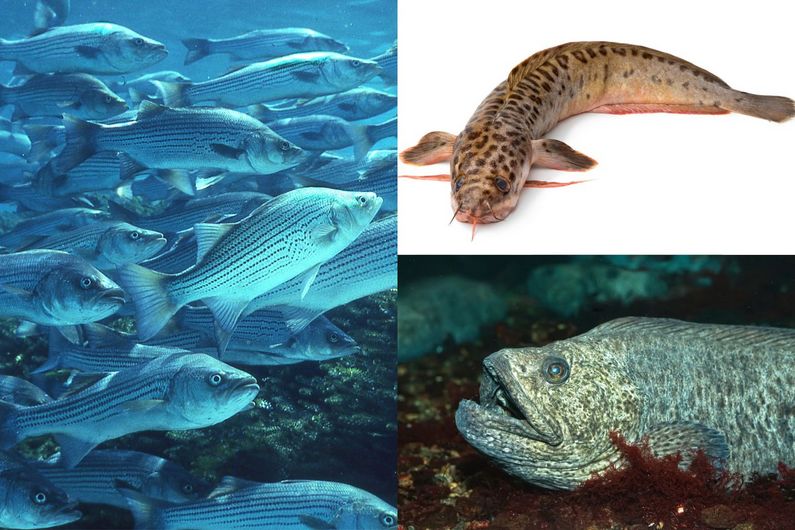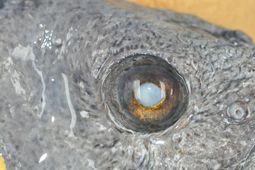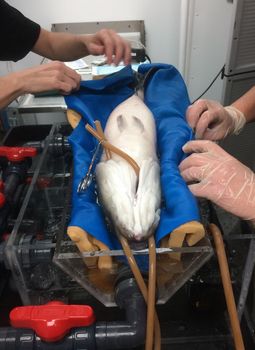Endangered fish can live longer after cataract surgery
- UdeMNouvelles
01/26/2024
- Martin LaSalle
According to a study led by UdeM veterinarian Claire Vergneau-Grosset, cataract operations can help fish survive and not get sick or die from lack of food they cannot see.
Humans aren’t the only species to develop cataracts with age. Some animals, including dogs, cats, horses and, it turns out, fish living in captivity, can also get cataracts as they grow older.
In the case of endangered fish housed in public aquariums, cataract surgery may be advisable to improve their health and prolong their lives.
Although quite rare, cataract operations, or lensectomies, have indeed been performed on fish over the past 20 years. However, their long-term effects had never been measured.
Dr. Claire Vergneau-Grosset, a professor of zoological medicine in the Faculty of Veterinary Medicine at Université de Montréal, and medical resident Julie Pujol set out to document the outcomes.
Their findings were published in the October 2023 issue of Veterinary Sciences.
The researchers performed lensectomies on 11 fish belonging to three endangered or threatened populations: striped bass (Morone saxatilis) from the St. Lawrence River, spotted wolffish (Anarhichas minor) and Atlantic wolffish (Anarhichas lupus).
Over 10 years old
In the wild, these fish are found mainly along the northwestern coasts of the Atlantic Ocean and in the St. Lawrence estuary. Those that underwent surgery were kept at the Aquarium du Québec, in Quebec City.
“They were all over 10 years old, which is longer than their life expectancy in the natural state, and this was probably a contributing factor to the development of the cataracts, combined with nutritional factors,” Vergneau-Grosset said.
“In the wild, an individual with cataracts won’t survive long with poor vision: it either becomes easy prey or becomes anorexic and starves to death because it can’t find food.”
Cataracts are diagnosed in fish by clear clinical signs: in addition to loss of appetite, the fish may have difficulty orienting themselves, their crystalline lenses become white and cloudy, and their skin darkens.
“Like chameleons, these fish have pigment cells called melanophores that enable them to change colour to adapt to their environment,” Vergneau-Grosset said. “When they get cataracts and have trouble distinguishing colours, their skin turns darker or even black.”
Lens is extracted
Most of the 11 fish in the study got operated on in one eye; a few got surgery in both.
The operation involves removing the crystalline lens from the eye (in dogs, by contrast, the lens is cleaned out). The fish is first placed in a vat of water to put it completely to sleep with an anaesthetic powder. It is then placed on a perforated table and its breathing is controlled by a pump that delivers water to its gills.
Following the advice of ophthalmologist Maria Vanore, Vergneau-Grosset then extracts the lens, making an incision in the limbus to cut the fibre and muscles surrounding the lens. After the delicate surgery, the cornea is sutured and an anti-inflammatory is administered.
“Studies have shown that fish experience nociception [the neurological process associated with pain] and our team is developing treatments for the pain,” said Vergneau-Grosset.
“In fact, our colleague Juliette Raulic won an award for her residency project on a new molecule—robenacoxib—which is given by injection every three days rather than daily, thus reducing the stress on the fish.”
Success rate of 73%
The aim of the research was to determine whether lensectomy, which is traumatic in and of itself, improves the well-being and longevity of fish with cataracts.
“The answer is yes,” said Vergneau-Grosset.
“Our results show that 73 per cent of the operated fish resumed feeding, regained normal body condition and appeared clinically normal. The median survival time was around one year, which is a positive outcome for fish of this age," she said.
"What’s more, they regained their sense of orientation and their skin became lighter again as their vision improved.”
Three fish died within months following the lensectomy, mainly from problems unrelated to the surgery, such as gonadal tumours.
The lensectomies were performed using loupes with 3x magnification, a far cry from the precision tools used by ophthalmologists.
“We’re generalists and we use the instruments at hand,” Vergneau-Grosset explained.
“In any event, the goal isn’t to restore perfect vision to the fish. They don’t need to see as well as a dog, for example. We just want the fish to be able to manage in its environment.”
A lensectomy makes sense only for a fish of high value for the survival of the species, she added. “As a rule, we wouldn’t perform this operation on a goldfish."
About this study
"A post-operative follow-up of an endangered saltwater fish lensectomy for cataract management in a public Aquarium: a case series," by Claire Vergneau-Grosset et al., was published Oct. 8, 2023 in Veterinary Sciences.















